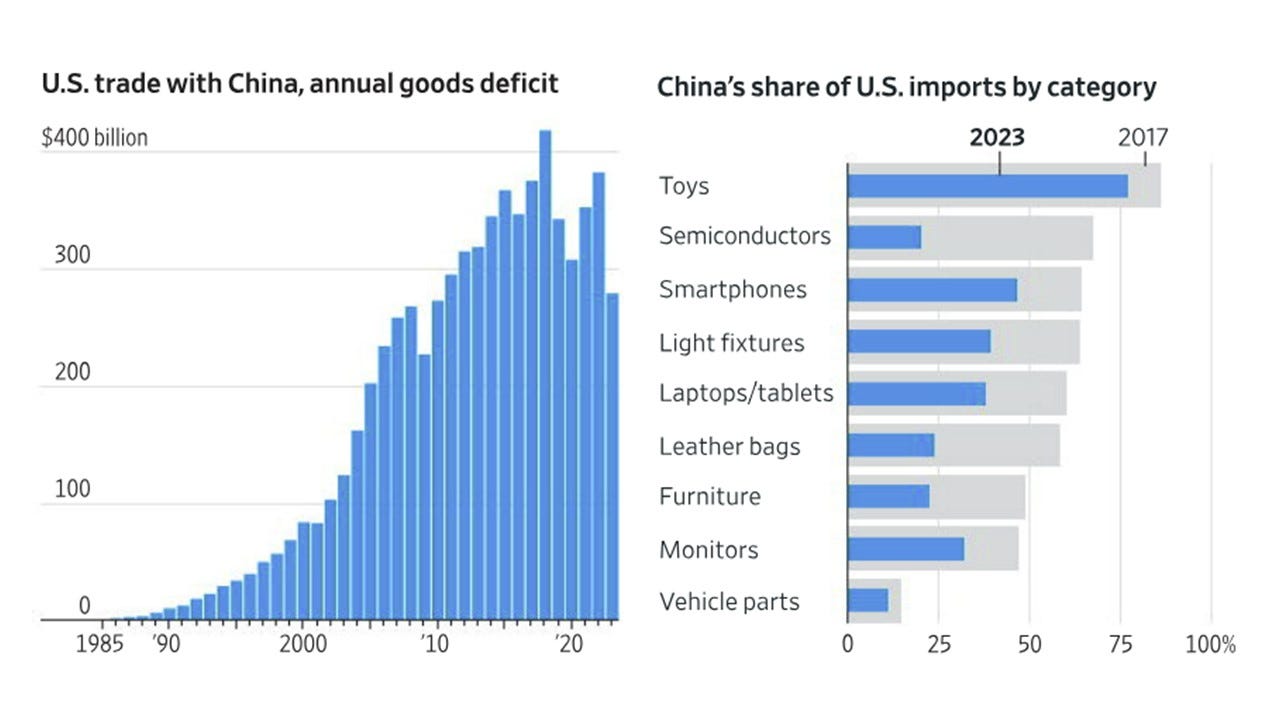How Does Trump Reciprocal Trade Work?
How Does Trump’s Reciprocal Tariff Work?
Recently, Robert Lighthizer, the U.S. trade representative during the first Trump term, said, “U.S. should import as much as China buys from us, reducing the trade deficit to zero. This is an extreme example of a reciprocal trade. The U.S. trade deficit with China was $295.4 billion in 2024 and 2.8 trillion over the past 10 years. The tariffs are not the only problems America faces. Often, non-tariff barriers (NTB) are more serious barriers to trade. The Trump administration is likely to impose tariffs to offset NTBs.
Studies by the World Bank, WTO, and UNCTAD rank India and China among the most restrictive countries in terms of NTBs. India, for example, has Sanitary and Phytosanitary (SPS) measures for agricultural imports, complex local standards and regulations and many anti-dumping measures. China requires strict regulatory approval processes, local content requirements (forcing companies to use domestic inputs), state subsidies favoring domestic firms, arbitrary customs delays, etc. The European Union (EU) has high agricultural standards that act as de facto trade barriers. Strict environmental and consumer protection regulations are imposed. In Indonesia, import licensing and quotas, local ownership requirements for foreign companies and mandatory use of domestic shipping and insurance are some examples.
The U.S. is not blameless. "Buy American" policies restrict foreign procurement. There are stringent product labeling and safety standards as well as frequent anti-dumping and countervailing duties.
Economists coined the term, reciprocal trade, to encourage trade. It refers to a system in which two or more countries grant each other mutual trade benefits, such as reducing tariffs, providing preferential market access, or balancing imports and exports. The goal is to create a fair and mutually beneficial exchange that supports economic growth while also protecting domestic industries. However, while reciprocal trade agreements can encourage prosperity and strengthen diplomatic relationships, they can also lead to economic tensions when disrupted. This has been particularly evident in recent trade actions involving the United States, Canada, and Mexico.
Reciprocal trade plays an essential role in industries that drive national economies, such as energy, steel, and natural gas. The United States, as a leading exporter of liquefied natural gas (LNG), has established trade agreements with European nations that ensure a steady supply of U.S. energy while allowing American companies to invest in European energy infrastructure.
Reciprocal trade also plays a vital role in the consumer goods sector, making products more affordable and accessible. A prime example is the trade agreement between Japan and the European Union, where Japan reduced tariffs on European cheese and wine in exchange for better terms on Japanese electronics. As a result, European consumers gained access to high-quality Japanese products at competitive prices, while Japanese consumers enjoyed a broader selection of European food and beverages.
While reciprocal trade fosters economic cooperation, it also creates challenges when one country unilaterally imposes tariffs or trade barriers. A clear example of this disruption occurred when the U.S. imposed tariffs on steel and aluminum imports from Canada and Mexico under President Donald Trump. And they retaliate.
These actions illustrate how fragile reciprocal trade relationships can be. When one country imposes new restrictions, its trading partners often respond with countermeasures, leading to higher costs for businesses and consumers, supply chain disruptions, and diplomatic tensions. This situation highlights the risks of using reciprocal tariffs as an economic weapon rather than as a tool for fair trade.
There is also the risk that long-term damage could be done to trade relationships. If Canada and Mexico find alternative trade partners in Europe or Asia, the U.S. could lose its competitive edge in key markets. Once trade relationships shift, it can be difficult to rebuild lost partnerships, which could hurt U.S. exporters in the long run.
As the March 2025 tariffs take effect, businesses and governments will closely monitor their impact. Whether these measures lead to better trade deals or economic instability will depend on how well the involved nations negotiate and adjust their policies. While reciprocal trade remains a crucial element of global commerce, its success depends on cooperation, strategy, and fairness. Trade policies must be carefully managed to avoid unnecessary economic disruptions while ensuring that all nations benefit from balanced and fair exchanges.





